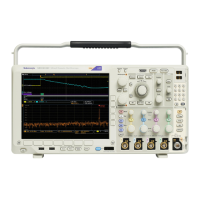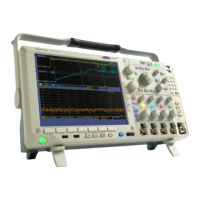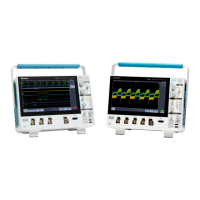Commands Listed in Alphabetical Order
FILESystem:C
OPy (No Query Form)
This command copies a named file to a new file. The new file may be in a totally
separate directory than the old file. You can only copy one file at a time using this
command. Wil
d card characters are not allowed.
Group
File System
Syntax
FILESystem:COPy {<source QString>,<destination QStrin g>}
Related Commands
FILESystem:CWD,
FILESystem:DELEte
Arguments
QString is a quoted string that defines the file name and path. If the file path is
within the current working directory, you need only specify the file name.
Examples
FILESYSTEM:COPY
“
E:/myTestData/tek00001.isf”,”I:/archive/ tek00001.isf”
copies
the file named TEK00001.SET, located in the /myTestData/ directory on the E:
drive to a file named TEK00001.SET in the /archive/ directory on the I:
drive. Note that I: is a mounted drive.
FILESystem:CWD
This command specifies the current working directory (CWD) for FILESystem
commands. The default working directory is "E:/". Anytime you use this
command to change the directory, the directory that you specify is retainedasthe
current working directory until you either change the directory or you delete the
directory. If you delete the current working directory, the oscilloscope resets
current working directory to the default directory the next time the oscilloscope is
powered on or the next time you execute a file system command.
This command supports the permutations of file and directory names supported
by Microsoft Windows:
Relative path names; for example, "./Temp"
Absolute path names; for example, "E:/MyWaveform"
Implied relative path names; for example "newfile.txt" becomes
"E:/TekScope/newfile.txt" if the current working directory is "E:/TekScope"
Group
File System
MDO4000/B/C, MSO/DPO4000B and MDO3000 Series Oscilloscopes Programmer Manual 2-319

